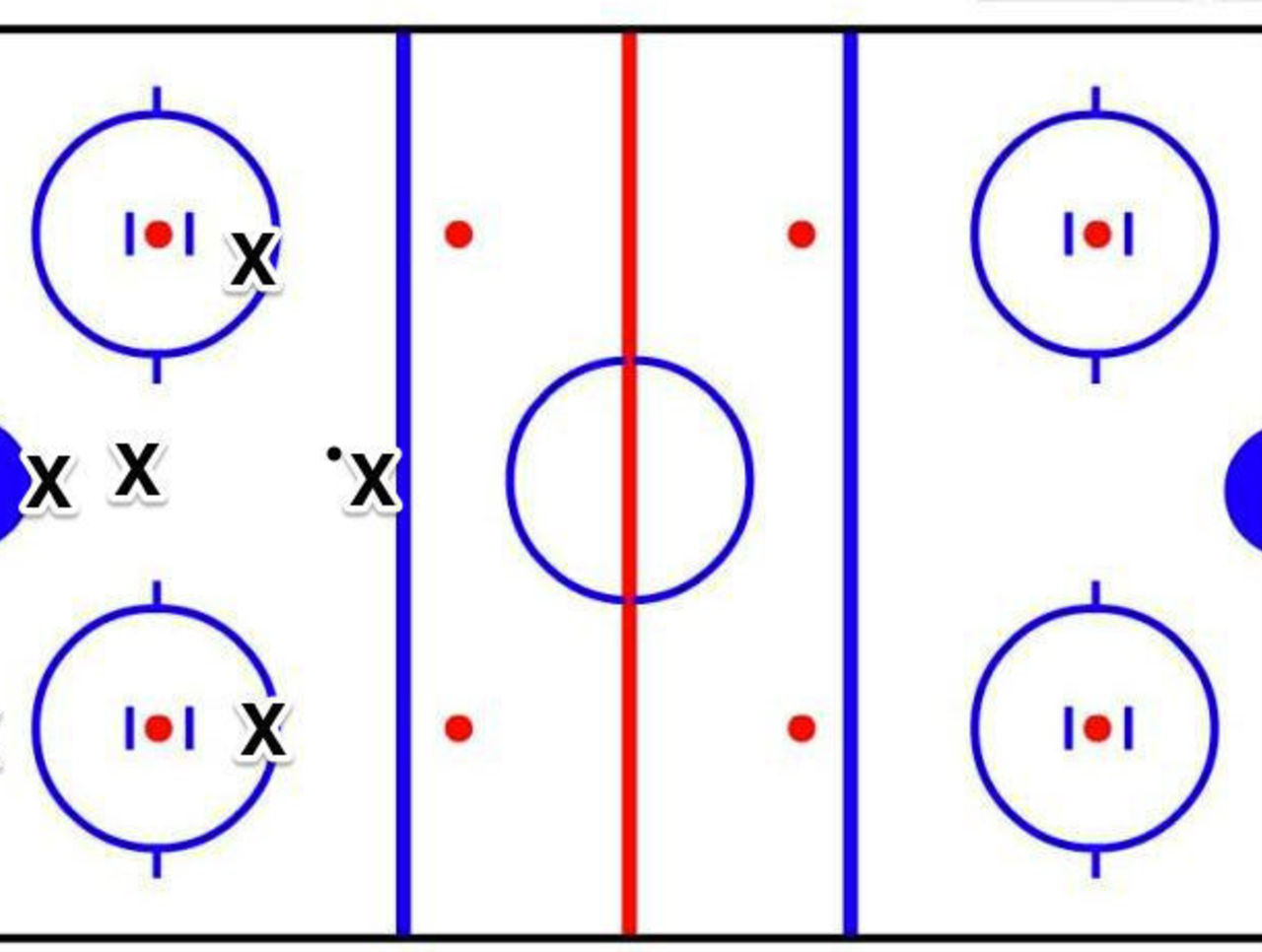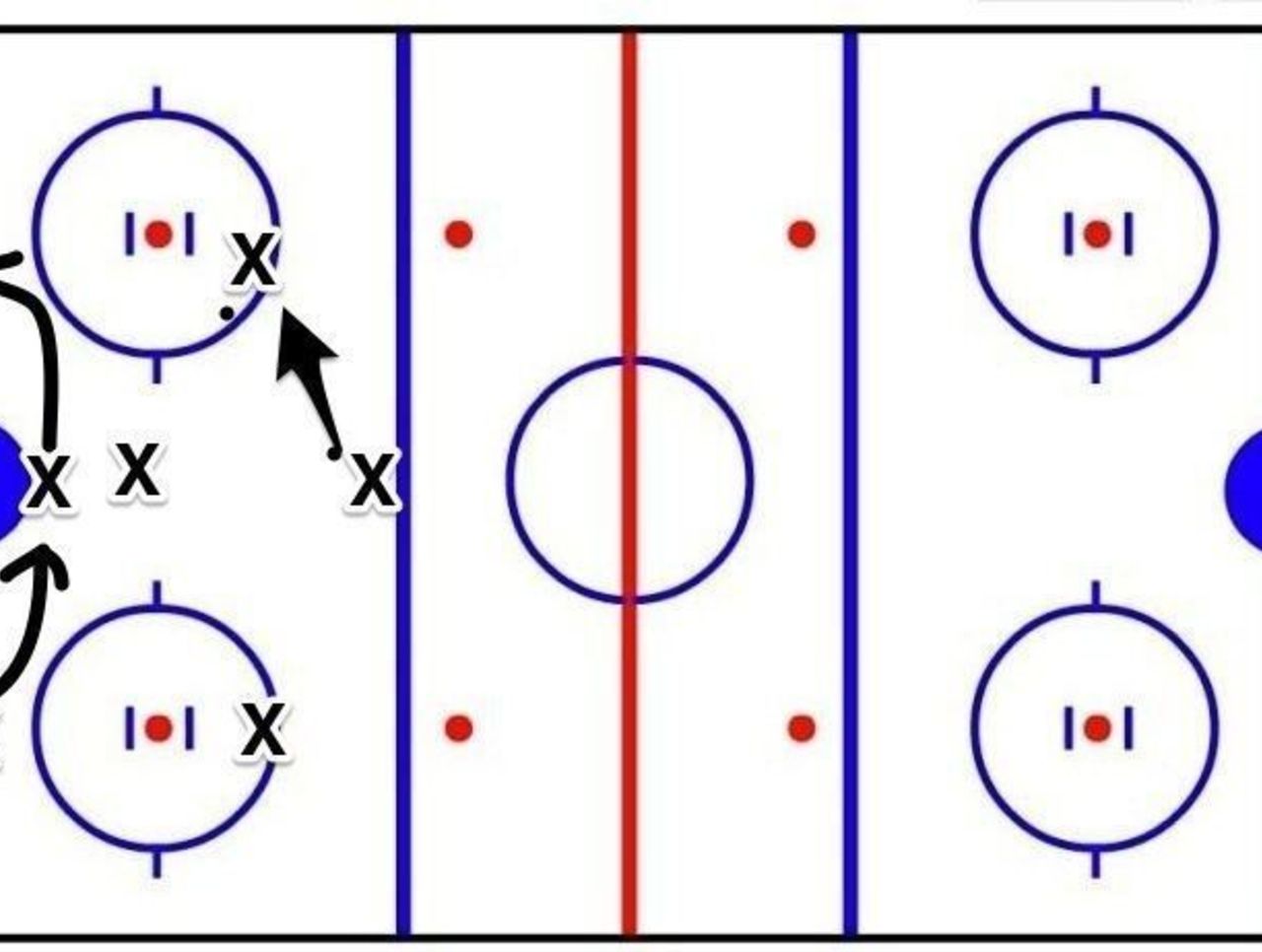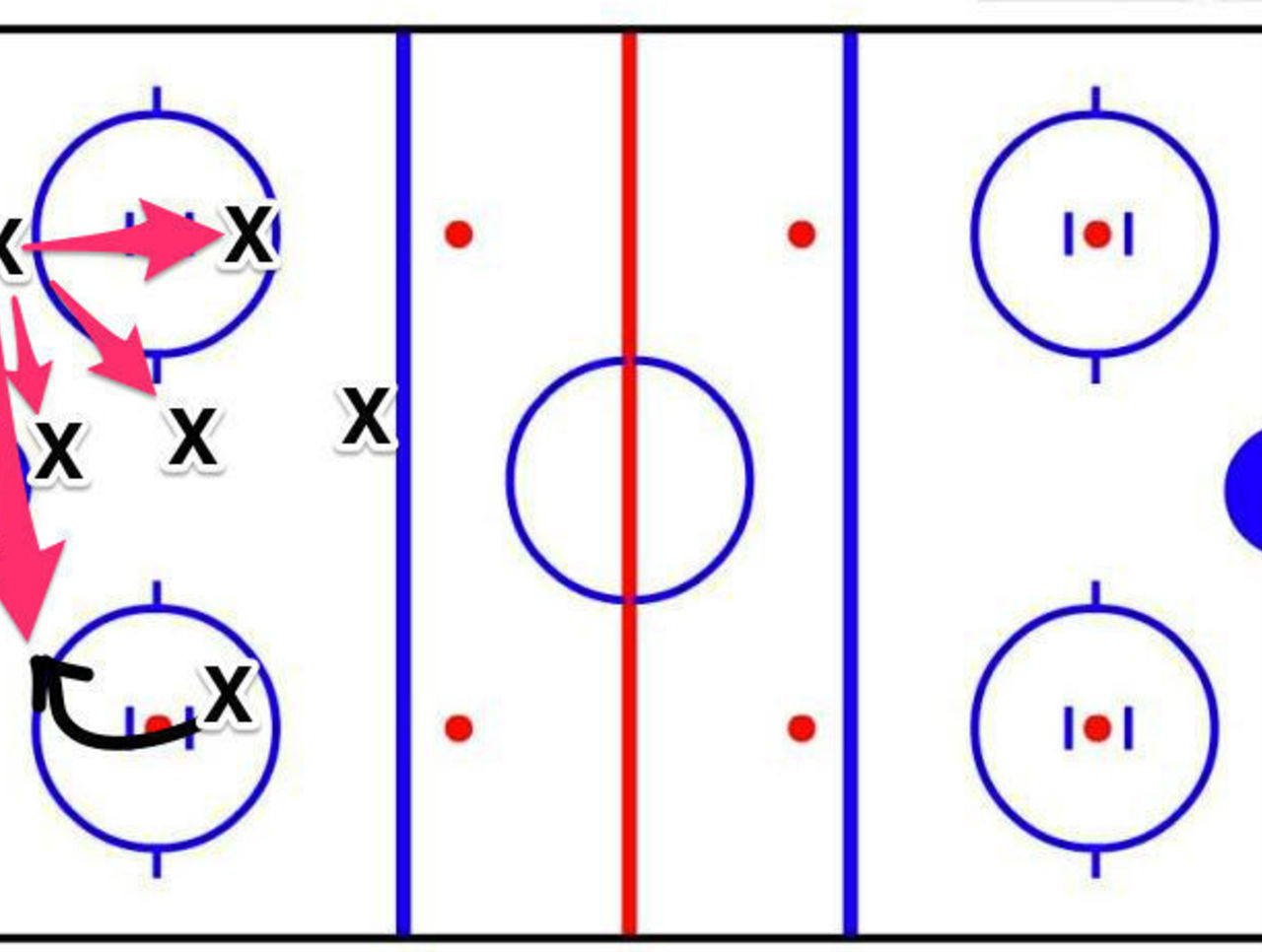The 6-on-5 strategy teams use to score with their goalie pulled

As migratory patterns would have it, the Ducks of Anaheim left the south and headed north on a Sunday night in late April, having just scored two goals in the final two minutes to take their game against Dallas to overtime. With a goal a few minutes into the extra frame, they locked up the series and now sit at home waiting to find out which team from California they’ll be matched up against.
In playoffs this year, the late goal with the tender pulled has happened at an unusual clip. St. Louis scored with the goalie on the bench against Chicago in Games 1 and 2, while Colorado did the same to Minnesota in Games 1 and 5. These are defensively sound teams succumbing to chaos and losing games they seemed to have in the bag.
What’s going on here?
I thought I’d diagram the general set up of an offense when they get to 6-on-5 hockey, and what they’re trying to do aside from score, obviously.
*****
On the defensive side of the puck, the coverage is pretty simple: only one forward plays high so you don’t get outnumbered down low. You’ll note that this is a recipe for one-timers from the point, but that’s a compromise the defense has to make. The last thing they need is some unmarked player floating around with his stick cocked back ready to bomb one in.
So, most offenses with solid possession use that open ice higher up to create shots, with intent not necessarily being to score as much as it is to get the puck to the danger zone. Of course you’d like to score, but the last thing you need is a guy missing the net and breaking the puck out for the other team, so late shots from distance tend to be more mid-net.
We’ll start with the basics.
What matters
* Screens: The offense is trying to get pucks on net, so you want to take away the goalie’s eyes, which is why most teams will put up a double screen - one higher, and one right on top of the goalie. Those guys combined with defenseman covering them makes for a mess of humanity right in front of the goalie, and that’s a good thing.
* Tips: You’ve got a high screen and a low screen - your best chance for a tip-in goal is the high guy getting a piece of the puck (more direction change than the low guy), so he shows the d-man where he’d like the shot to go (to which side of his body), and if the d-man has a lane, he’ll usually put it there.
* Rebounds: You’ll see in the diagram below who’s sniffing out rebounds - basically everyone.
* Puck recovery: You can’t score without the puck, so after shots, everyone is releasing to make sure their team regains possession.
* One-timers - there’s a lot of options based on the set-up I’ll show below.
* Getting the puck to the trouble area: if all else fails, you have more players, so get the puck to the front of the net by any means necessary.
General set-up
Most teams will generally run one quarterback in the middle of the ice on the blueline so they can utilize both sides. Moving the puck from side to side forces the D to rotate and switch, and if you’ve ever read any of my Systems Analyst posts, you’re probably aware that’s basically step one in every break down.

The low players rotate to whichever side the puck is moved to provide the wall guy with maximum options. Sometimes the puck is moved quickly up top, so they tend to pulse between the goal line and net front a little bit at a time until they can see the wall guy wants/needs real support.

With the puck on the half-wall, the guy who was putting up the high screen pops out to become a one-time option, so his rotation isn’t huge in raw distance, but more in the way he’s facing. There’s a lot of pivoting going on there. All the options for the half-wall player are shown in pink.

From there it’s a matter of knowing where to go after you move the puck. For example, if he moves it low, he’ll probably slash through the box and go to the net, which should put defenders in a tough spot - let him go and leave him open on the give and go, or stay with him and pull away from the puck carrier.
The player on the goal-line will then decide to either take the puck to the net, find a pass, or skate up to where the half-wall player just was, move the puck up high, and carry on. (The half-wall player would then take up the spot on the goal-line/net front.)
Here’s a look at the low players’ options (with the option mentioned above not shown for clarity sake):

Most teams also have a preference that they try to set up - the Tampa Bay Lightning try to set shots up from Steven Stamkos, while maybe some other teams have a great passer (a la Sidney Crosby) that they’d like to get the puck to behind the net.
Whatever the preference is, the idea is somewhat similar to doing magic tricks - you just need to offer enough misdirection to open it up, which might be east-west play when you’re looking to open up a high shot, or a number of passes on the left side while you sneak someone back door on the right side.
In the end, it comes down to leaning on hockey’s luck factor. Once a shot has been taken all the options go out the window, and the collapse happens while everyone tries to sniff out rebounds. And, if you think about it, this formation I’ve shown here leaves forwards in near-perfect position to cash in on anything that gets kicked out.

There’s no fool-proof way to get pucks in the net, so all you can do is make the defense make decisions, get pucks to the net, and get dirty.